Figures
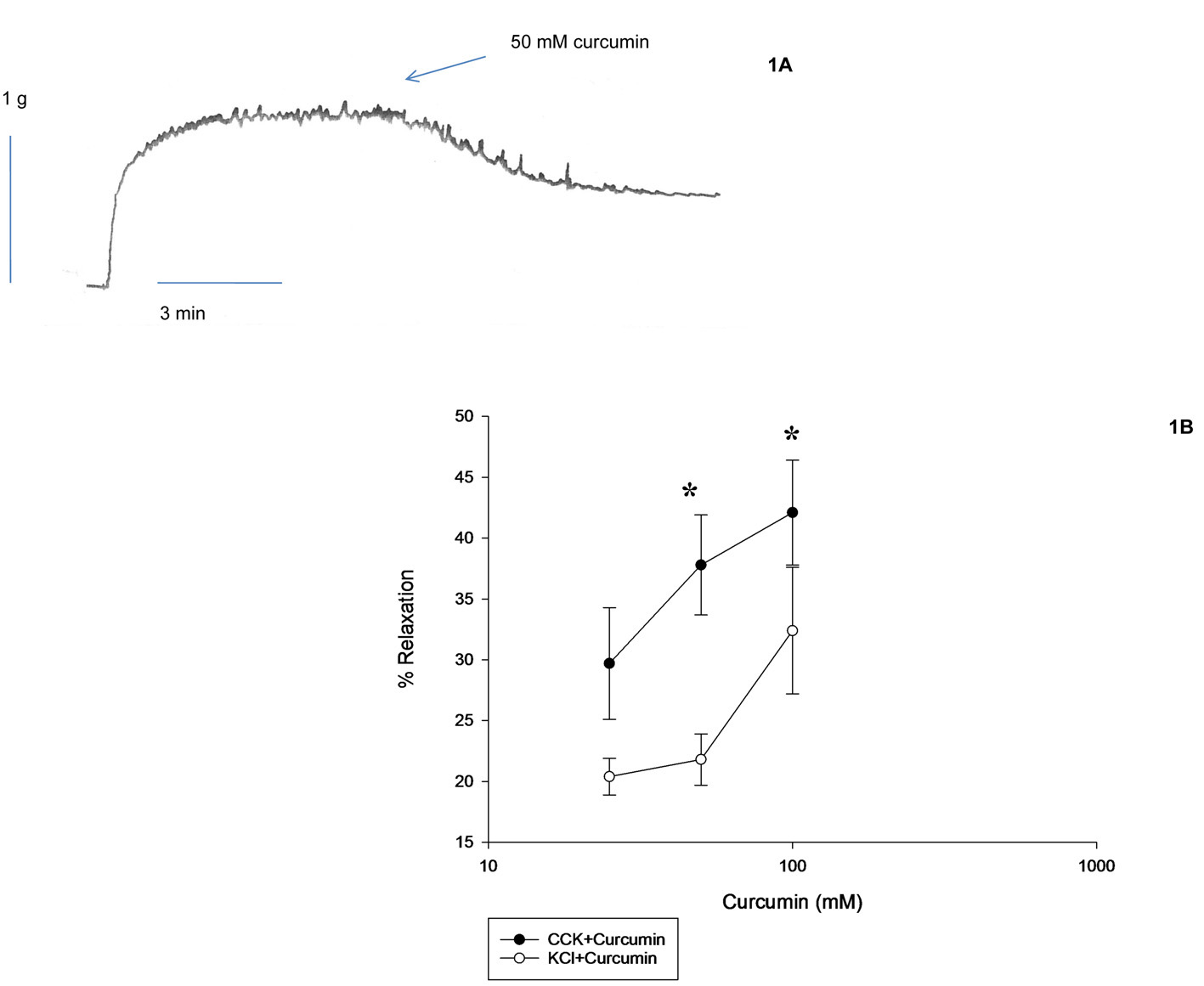
Figure 1. Effect of curcumin on CCK- or KCl-induced tension. (1A) A data trace showing the relaxation caused by curcumin on CCK-induced tension in a male guinea pig gallbladder strip. (1B) Curcumin (25 mM) was used to relax the CCK- or KCl-induced tension, there was no significant difference in the amount of curcumin-induced relaxation. When 50 mM curcumin was used there was a significant (P < 0.01, n = 8) difference in the amount of CCK-induced tension (filled circles) when compared to the amount of relaxation in the KCl-induced tension (open circles). When 100 mM curcumin was used, there was a significant (P < 0.05, n = 7) difference in the amount of curcumin-induced relaxation when CCK and KCl were compared. The CCK-induced tension was reduced more than the KCl-induced tension. There was no significant difference between the amount of CCK-induced tension and the KCl-induced tension. The significance was determined by paired t-tests.
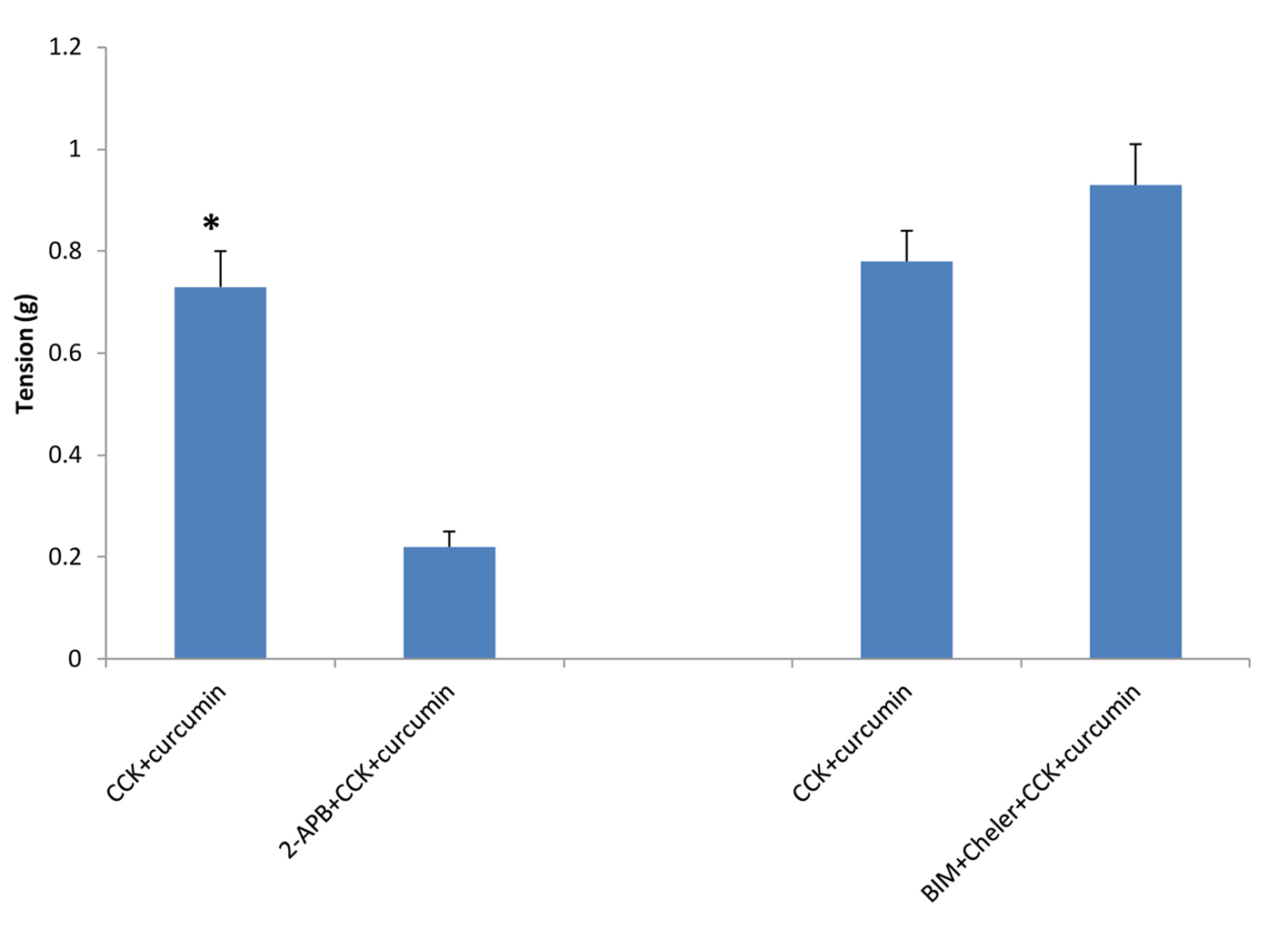
Figure 2. The effect of 2-APB or PKC blockers on curcumin-induced tension of CCK-induced tension. When the strips were treated with 2-APB, an inhibitor of IP3-induced Ca2+ release, there was a significant (P < 0.001, n = 4) decrease in the amount of CCK-induced tension. The use of the PKC blockers bisindolymaleimide IV and chelerythrine Cl- had no significant effect on the amount of CCK-induced tension.
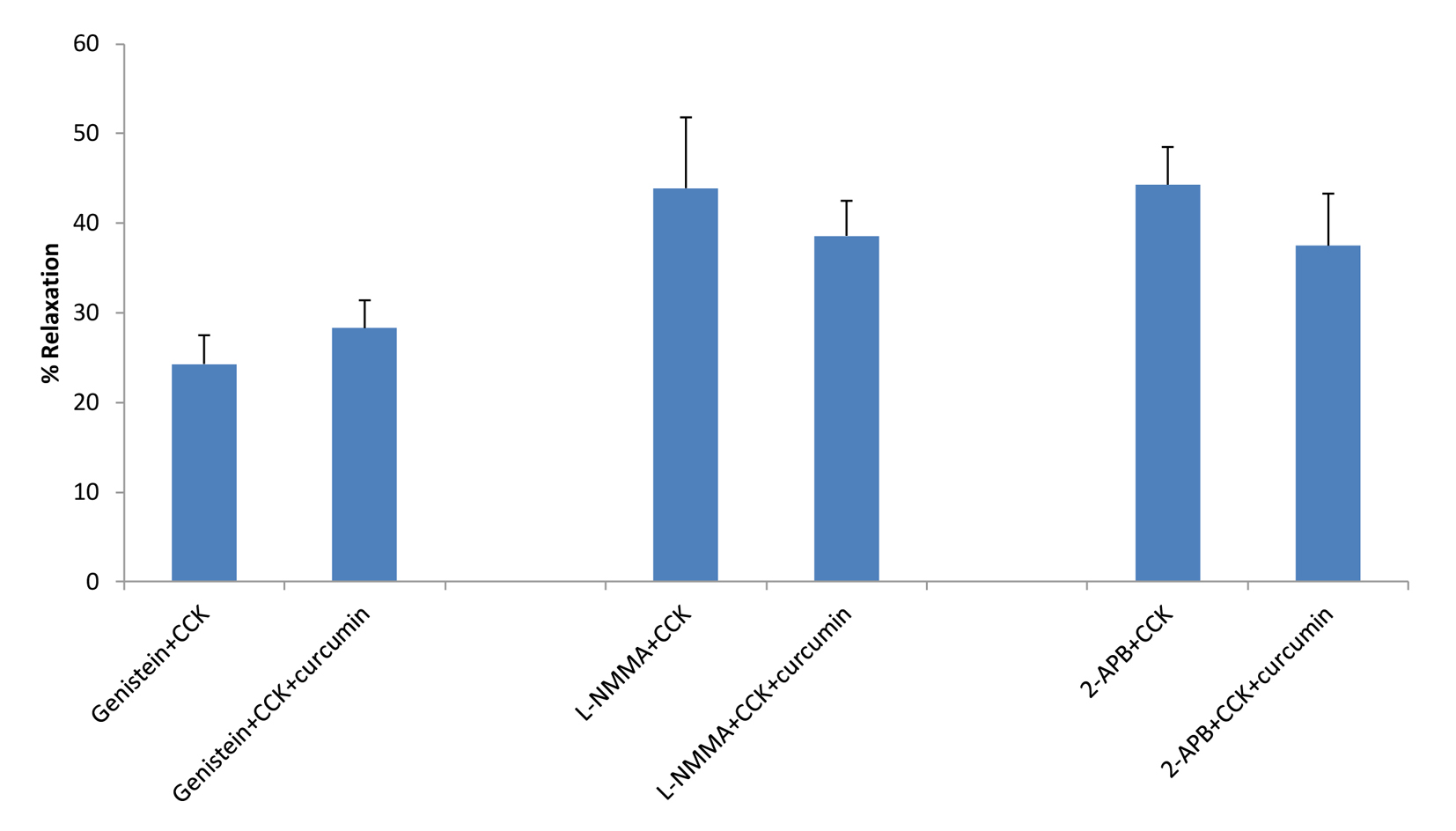
Figure 3. The effects of genistein, L-NMMA or 2-APB on curcumin-induced relaxation. Neither genistein, L-NMMA, nor 2-APB had a significant effect on the amount of curcumin-induced relaxation of CCK-induced tension.
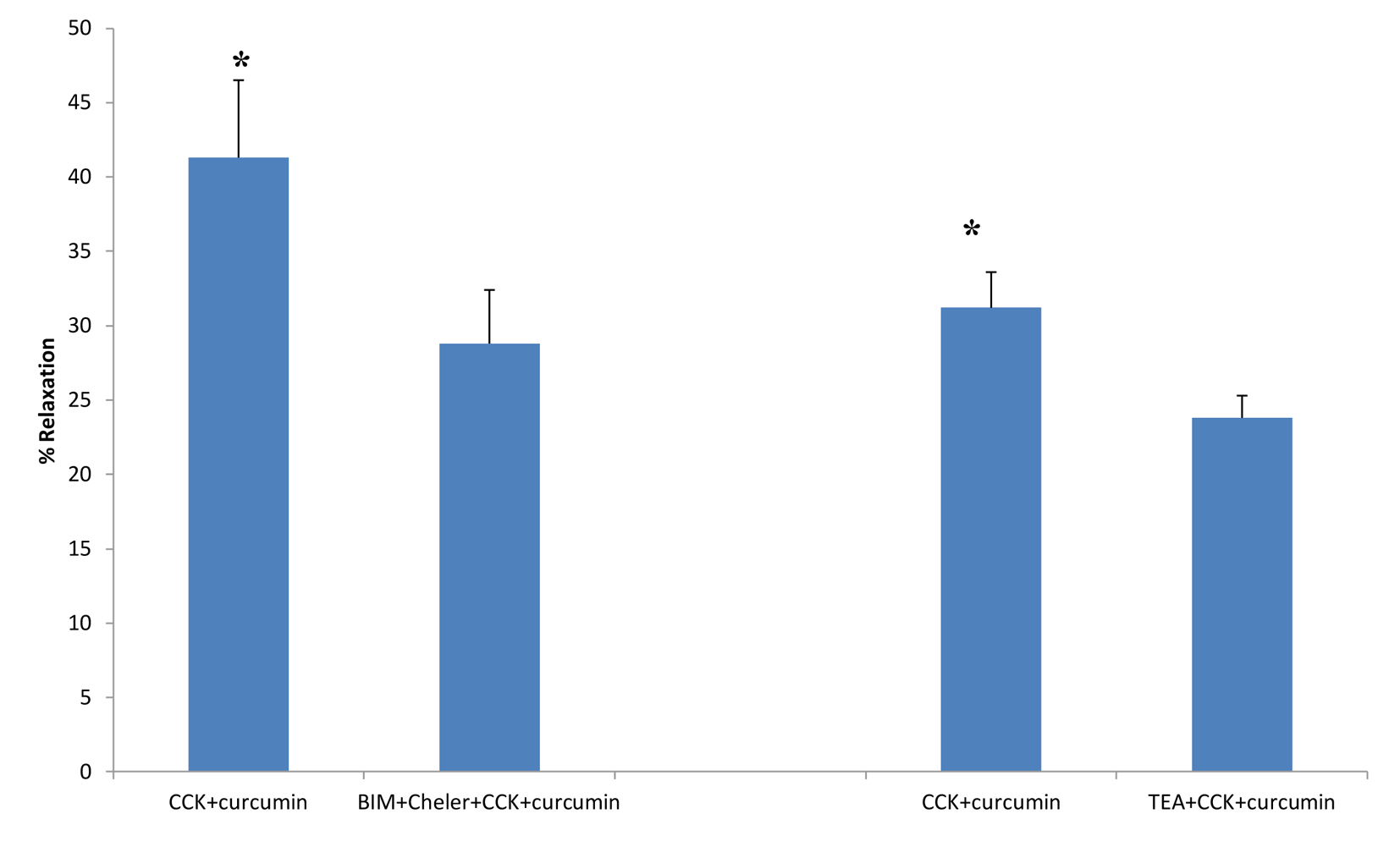
Figure 4. The effects of PKC blockers or TEA on curcumin-induced relaxation of CCK-induced tension. The use of the PKC inhibitors BIM (0.5 μM) and chelerythrine Cl- (Cheler, 5.0 μM) significantly (P < 0.001; n = 5) decreased the amount of curcumin-induced relaxation. The use of TEA, a K+ channel blocker, significantly (P < 0.01, n = 5) decreased the amount of curcumin-induced relaxation of CCK-induced tension.
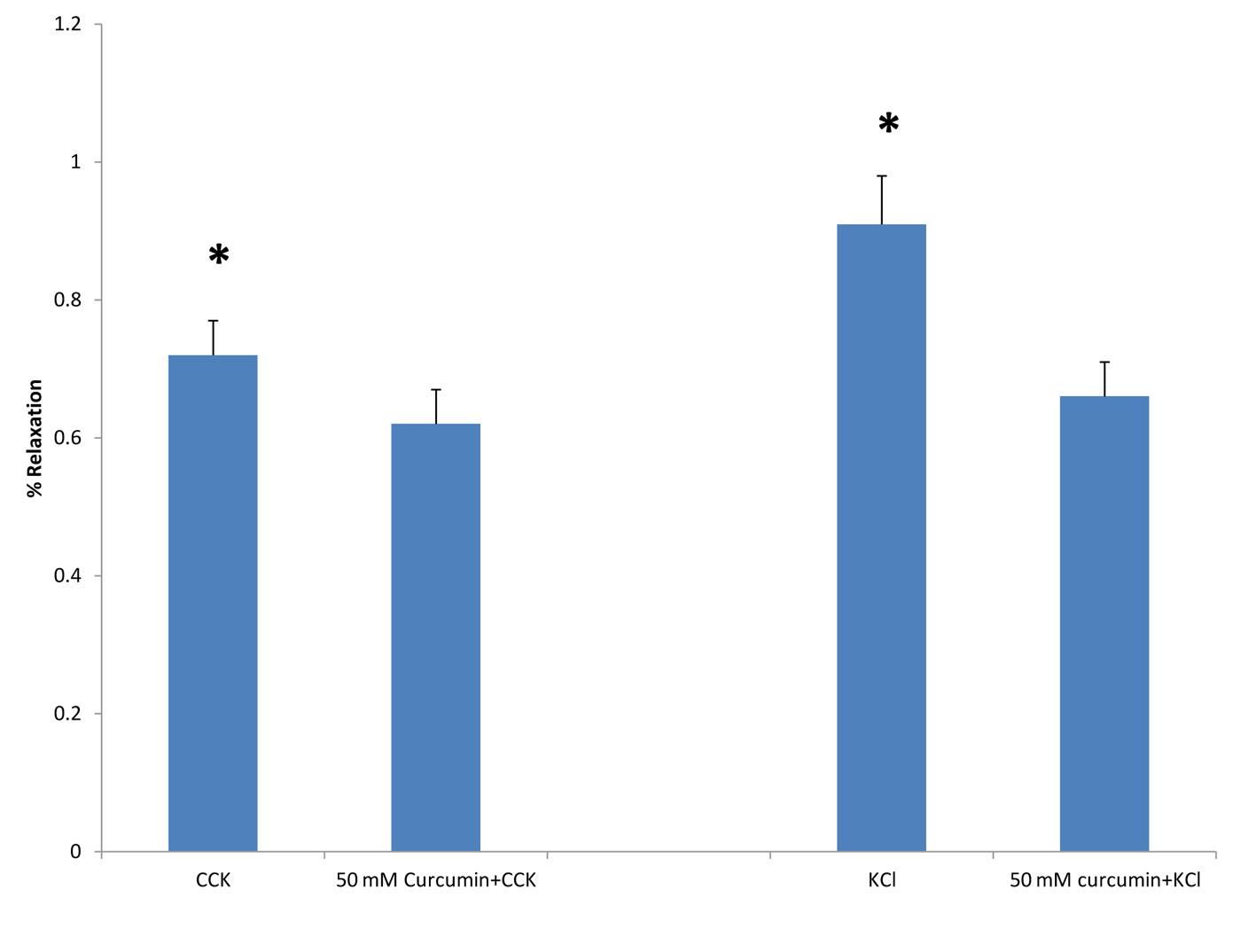
Figure 5. The effect of curcumin on CCK- or KCl-induced tension. When curcumin (50 mM) was added to the chambers 3 min prior to the addition of CCK (1 nM) there was a significant decrease (P < 0.01) in the amount of tension generated (n = 6). When 50 mM curcumin was added to the chambers 3 min prior to the addition of KCl (40 mM), there was a significant (P < 0.001) decrease in the amount of tension generated (n = 5).




